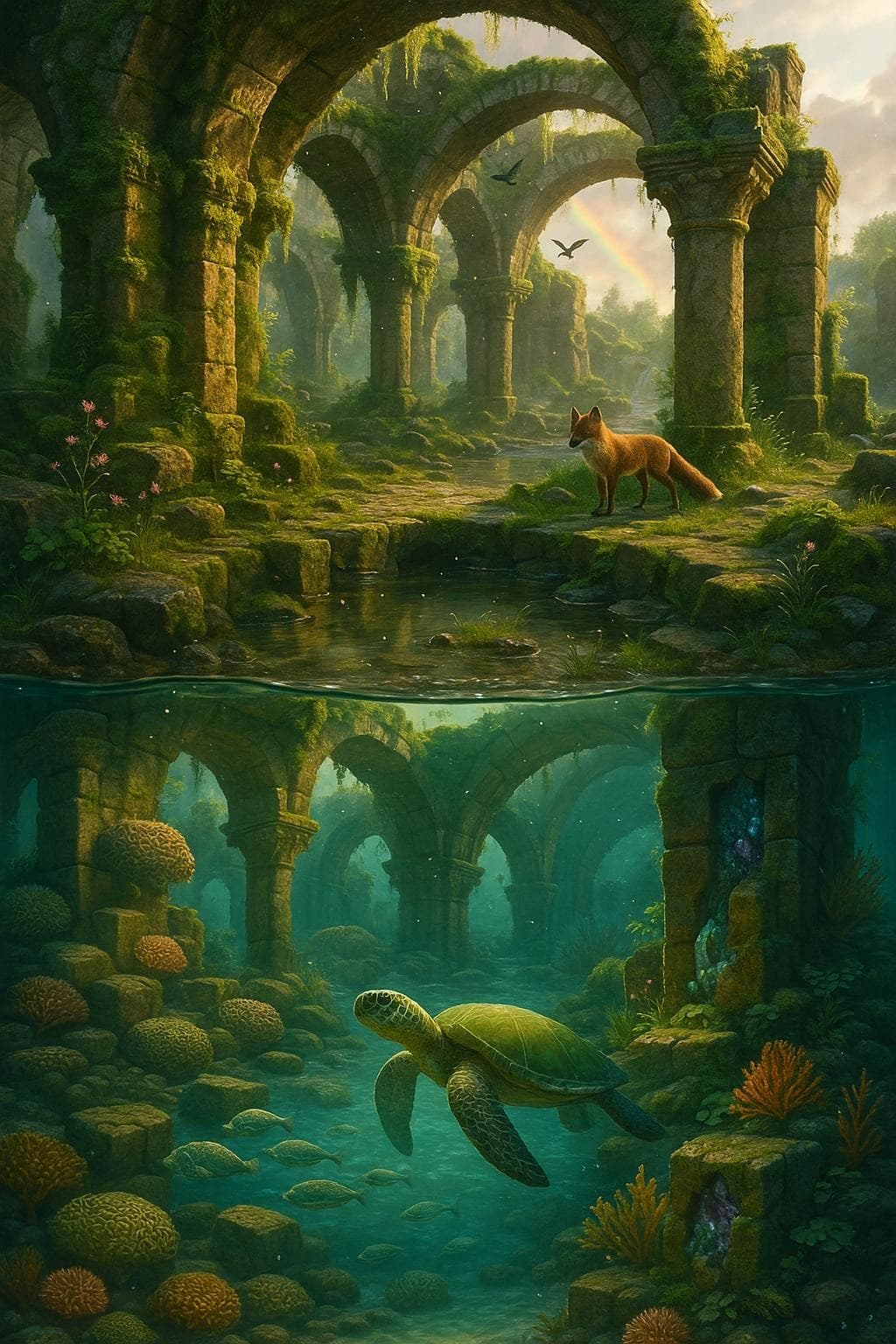Finding Treasure in the Ashes of Ruin

Where there is ruin, there is hope for a treasure. — Rumi
The Sufi Paradox of Loss and Discovery
At the outset, Rumi’s line reframes ruin not as an end but as an opening. In Sufi thought, the self must be pared down—what mystics term fana, the annihilation of ego—so that a truer life, baqa, can emerge. Ruin thus becomes a clearing where new meaning takes root. Rumi’s Masnavi (13th c.) teems with images that press this point, such as the tale of the chickpea in the pot, scalded yet transformed; the cook consoles it: endure the heat so you may become nourishing. Loss, then, is not senseless; it is the kiln of maturation.
Ruins as Vaults of Memory
From metaphor to material history, archaeology shows how devastation can disclose what ordinary time conceals. Pompeii’s burial under Vesuvius preserved frescoes, loaves of bread, and graffiti that now speak across millennia. Likewise, the carbonized Herculaneum scrolls—once illegible—have begun yielding text through modern imaging and machine learning, turning char into archive. In each case, catastrophe functioned as a seal, locking in details that would otherwise have decayed. Rumi’s intuition lands here: ruins, paradoxically, safekeep treasures that clarity and comfort often overlook.
Post‑Traumatic Growth and the Inner Treasure
Turning to the inner life, psychology names a similar pattern post‑traumatic growth. Tedeschi and Calhoun (1996) documented how some people, after profound disruption, report deeper appreciation of life, strengthened relationships, and newly discovered possibilities. This is not a glib celebration of suffering; rather, it recognizes that meaning-making can convert fragments into foundations. Journaling, guided therapy, and service to others often catalyze this reframing, helping individuals sift rubble for values that endure. As with Rumi’s vision, personal ruin can illuminate a map that comfort kept folded.
Economies Rebuilt: Creative Destruction
On a civic scale, economic history echoes the theme. Schumpeter (1942) called capitalism a process of “creative destruction,” where obsolete structures collapse so novel industries can rise. Cities have practiced this alchemy: New York’s High Line (opened 2009) transformed a derelict rail into a linear park, turning industrial decay into social and ecological value. Similarly, vacant lots in post‑industrial neighborhoods have become community farms, reweaving local economies. Rumi’s counsel thus becomes urban strategy: acknowledge the break, then design the treasure that follows.
Kintsugi and the Aesthetics of Repair
In the arts, the Japanese practice of kintsugi repairs broken ceramics with lacquer dusted in gold, rendering cracks luminous rather than hidden. Legend places its origins in the 15th century, when a shogun’s mended bowl returned from abroad with crude staples, inspiring artisans to elevate repair into beauty. Kintsugi aligns with wabi‑sabi, the appreciation of impermanence and imperfection. By highlighting the fracture, the object gains biography and worth. Here, ruin is not erased; it is curated into the artifact’s most striking feature—Rumi’s treasure, made visible.
Fire Ecology: Renewal After Burn
Nature quietly concurs. In fire‑adapted ecosystems, heat triggers renewal: lodgepole pine and some banksias bear serotinous cones that open only after flames, releasing seeds into nutrient‑rich ash. Pausas and Keeley (2017) describe how such regimes reset competition and diversify habitats. To an untrained eye, a charred forest is mere loss; yet within weeks, fire‑following blooms carpet the ground, and new cohorts of trees take hold. The pattern mirrors Rumi’s insight: disturbance unseals stores of life that dormancy kept shut.
Practicing Hope in the Aftermath
Bringing the lesson home, hope is not wishful thinking but method. First comes honest inventory—naming what is gone without varnish. Then, inquiry: what remains intact, what skills or relationships survived, what constraints now lifted create room for invention? Rituals of closure mark the end; small experiments prototype the beginning. Mentors and communities function like archaeological teams, helping brush dust from what still glints. In this deliberate sequence, ruin becomes workspace. As Rumi suggests, the treasure is present; our task is to learn how to find it.